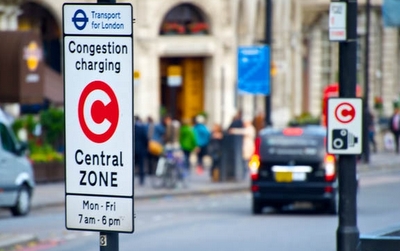If you had to pay $20 to enter the CBD by car, would you take public transport instead? Apparently, if London’s experience is translatable, the answer is yes! In 2003, in an attempt to improve the untenable congestion and pollution that plagued Central London, the government introduced “Congestion Charging”. All private and commercial vehicles entering the area were charged £5 for the privilege, while bicycles, motorcycles, taxis and buses were exempt. Twelve years later, the congestion charging is still going strong, with the current price of £10 per day (~$20 AUD).
Besides the obvious and expected outcomes of less congestion and pollution, there have been some unforeseen benefits as well, reports The Washington Post – Central London’s roads are safer. Although traffic has sped up (from pre-congestion pricing slogs averaging 8km/hour), there are actually fewer crashes and fewer fatalities.
According to a new study from the Lancaster University Management School, Congestion Pricing has made the roads “safer for all”. The improvements are not just due to reduced numbers of cars on the road, but a reduction in the probability that a collision will occur – that is, there has been a significant decline in the rate of accidents per kilometre driven. All types of crashes are down by 40%, with an estimated 46 fewer serious accidents per year – translating to 4.6 fewer deaths each year.
There is no doubt that introducing Congestion Charging such as this would be politically unpopular, but there is evidence that it works. It encourages people to drive less, take public transport more often, and also charges the people who do drive for the congestion and pollution that they create – which seems fair enough! It raises money for the city to invest in transport improvements, and now, it appears, it also makes the roads safer for its citizens.
Could it work in Australia? It would be interesting to compare the effects of this type of congestion charging to the current “Congestion Levies” that have been implemented around Australia which are imposed on property owners based on the number of parking spaces. This levy has made no material difference to congestion in our CBDs and has only driven up the cost of parking. Is the London model a fairer system? Give us your thoughts….
Image credit: Transport For London (TFL)
Related post:
The case for congestion charging in Australia


One Response
Whilst it may have had benefits for London, the implementation of the congestion charges is based on a ring around London where anyone entering the ring is charged a toll. This is in stark contrast to Melbourne and even Sydney which is simply a parking tax.
If both Melbourne and Sydney were serious about congestion, they too would approach it by way of a toll on all vehicles and not just on those parking off-street.
Currently, on-street parking is exempt from the Melbourne Congestion Levy. It is apparent that there is a clear gap between the goals of Melbourne’s levy and its implementation.